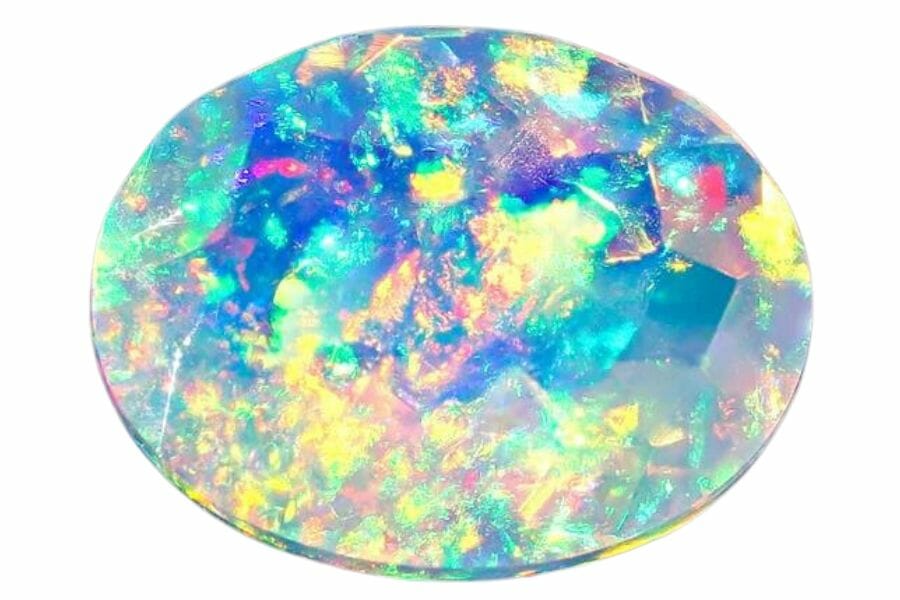Opals hide in certain parts of the world, just waiting to be discovered. Some places, like Australia, are famous for them, but you might be surprised where else they can pop up. You can even find them in the United States!
We’re going to show you some of the best places to find opals and how you can actually be successful with your search.
Knowing how to find and identify opals might just lead to a fun adventure close to home. From the sunny deserts of Nevada to the cool mountains of Idaho, opals pop up in some unexpected places.
If you’ve ever wanted to spot one in the wild, there are neat tricks to help you do just that.
What is opal?
Opal is a unique gemstone, known for its mesmerizing display of colors. It’s not just any ordinary rock; it’s made up of tiny silica spheres arranged in a special pattern.
The process of how opals form is quite interesting. When water runs through the earth, it picks up silica from sandstone and deposits it in cracks and voids. Over time, this silica mixture dries up and hardens into opal.
The special play of color, or the sparkly patterns you see in opal, happens because of the way light interacts with the silica spheres. Every opal is one-of-a-kind, with its own mix of colors and patterns. It’s truly a wonder of nature!
The different types of opal
Not all opals are the same! How opals are formed and where they come from can make a big difference in their appearance. Because of this, there are different types of opal.
Black Opal
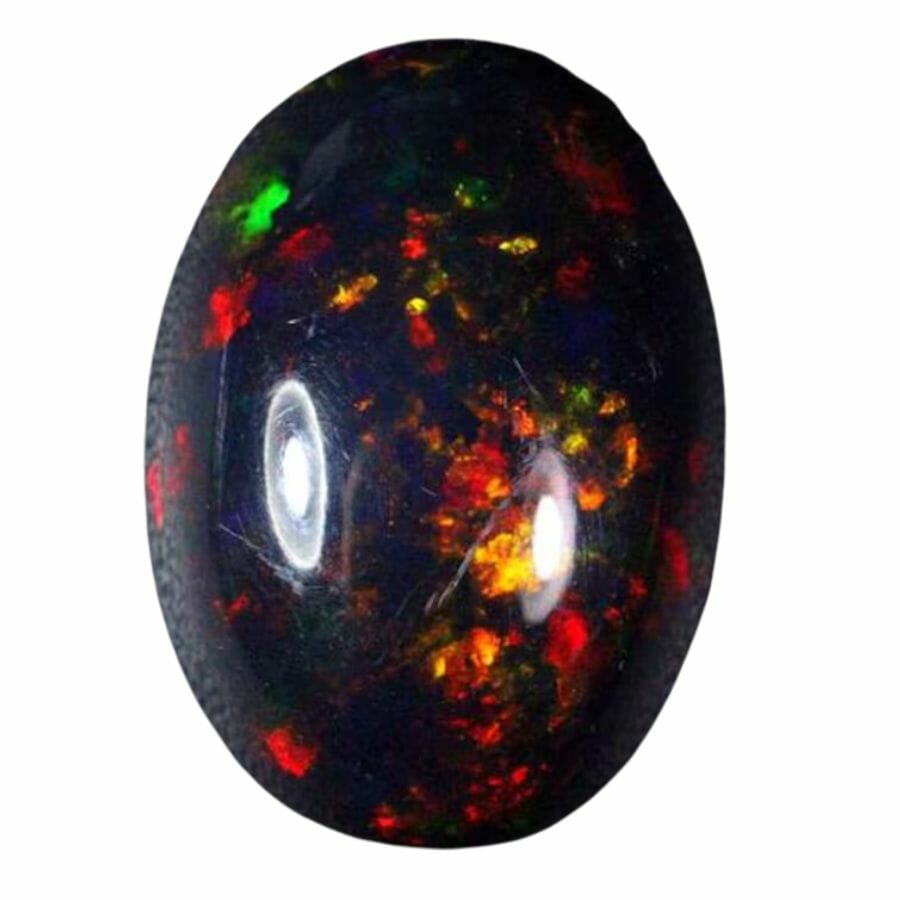
Black opal is a stunning variety of this gemstone, standing out with its dark body tone which provides a rich backdrop for vibrant color plays. Unlike lighter opals, its deep shades can range from dark grey to jet black.
This dramatic backdrop makes the colors pop, giving it a breathtaking appearance
Finding opals is an adventure. If you’re on the hunt for black opal, Australia is the top spot, especially around Lightning Ridge. In the US, the Virgin Valley in Nevada is also a great place to find this unique stone.
Boulder Opal
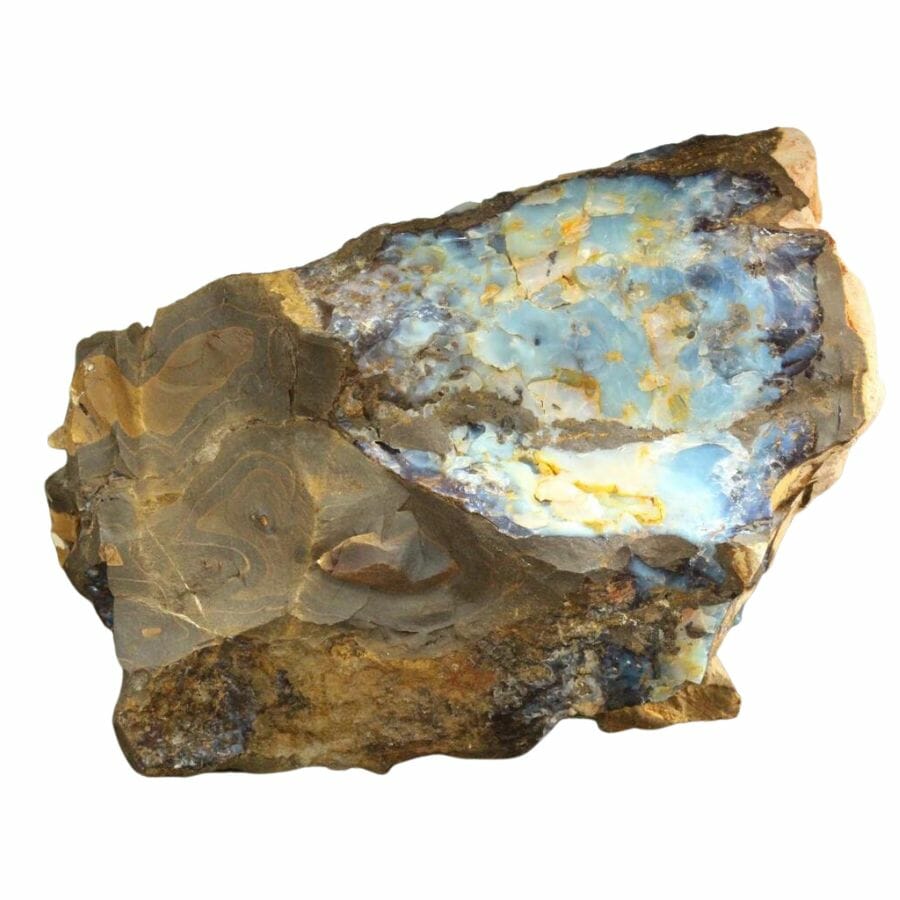
Boulder opals are found inside ironstone boulders, and you’ll often see bits of the rock mixed in with the opal, creating cool patterns. This blend of rock and color is what makes them stand out.
Most boulder opals call Australia home, especially in areas like Queensland. While you can find other opals in different parts of the world, boulder opals have a special place down under.
Their mix of vibrant colors and rugged rock makes them a unique and loved member of the opal family.
Hyalite
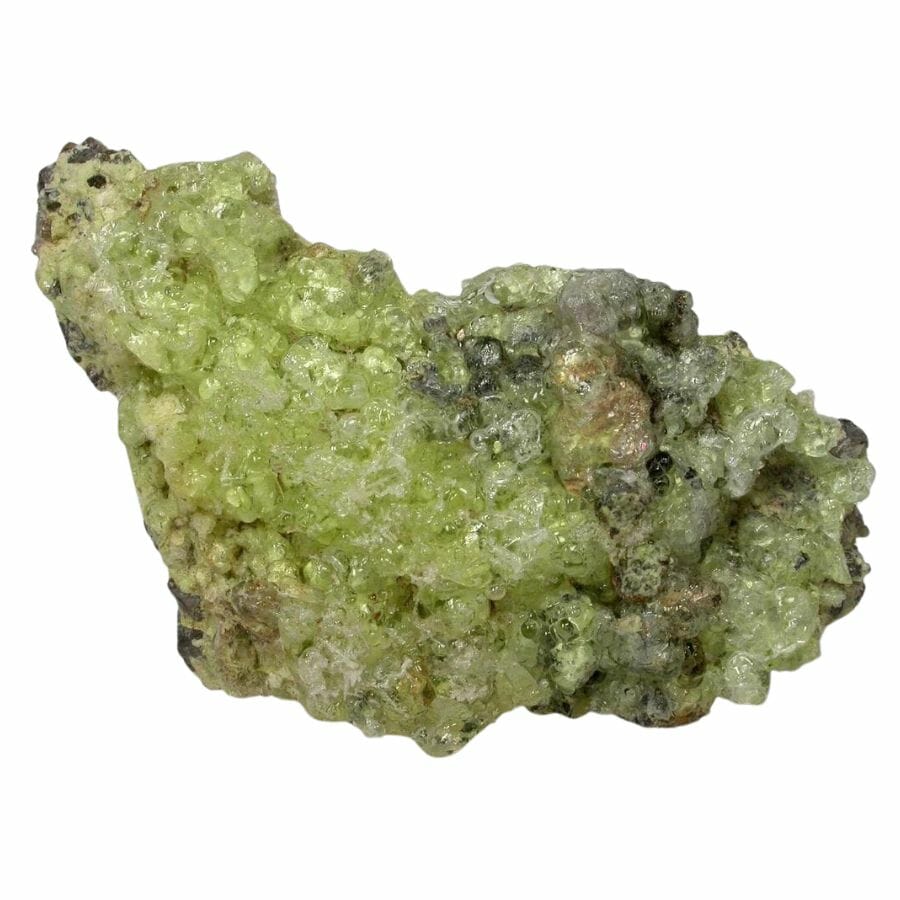
Hyalite is a special kind of opal that looks like a drop of clear water on rocks! It’s see-through, so it doesn’t have the colorful play that other opals show, but it has its own charm.
This gem often has a cool, glassy shine that makes it look like a bubble or dew. While many opals are found in Australia, hyalite is more of a traveler. It’s been spotted in places like the United States, Mexico, and even Germany.
Each location gives hyalite a unique touch, making this gem a cool pick for rock lovers around the globe.
Hydrophane Opal
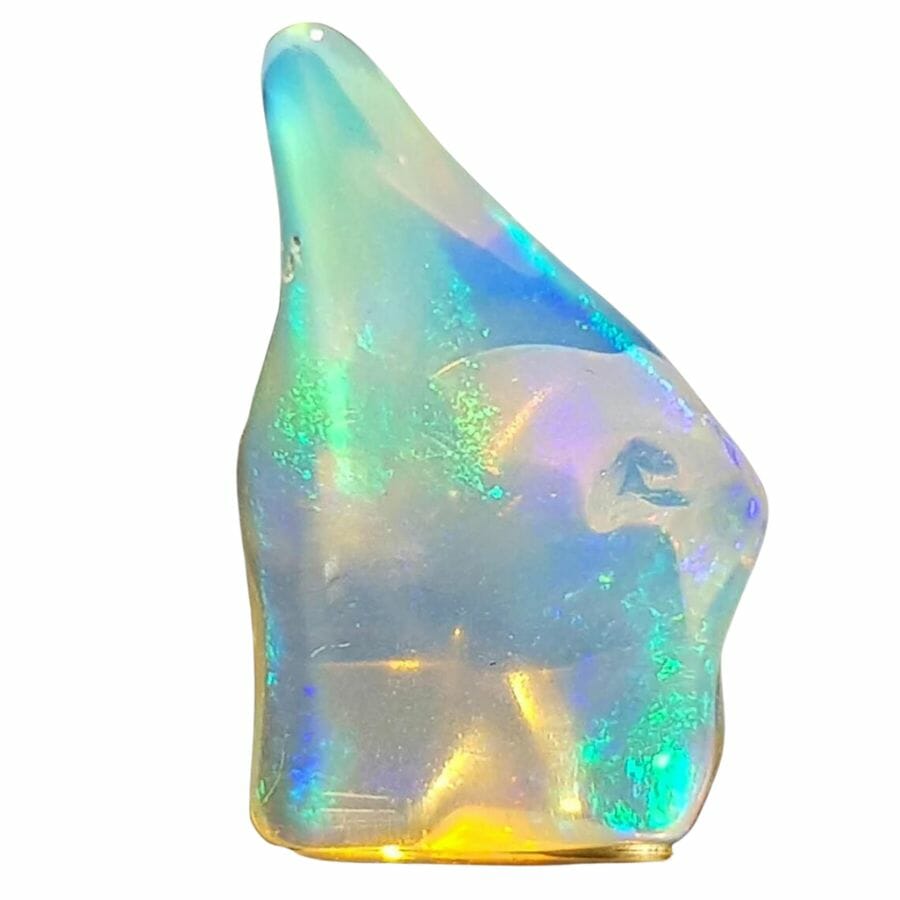
Hydrophane opal has a neat trick up its sleeve: it loves water! When it gets wet, it becomes more transparent and can even show more colors.
When people look for opals, they might find hydrophane opals in places like Ethiopia, which is a bit different from the usual Australian opal spots. This type of opal stands out because of its water-loving nature, setting it apart from other opals.
So, if you come across an opal that changes its appearance with water, you’ve probably found a hydrophane!
Jelly Opal
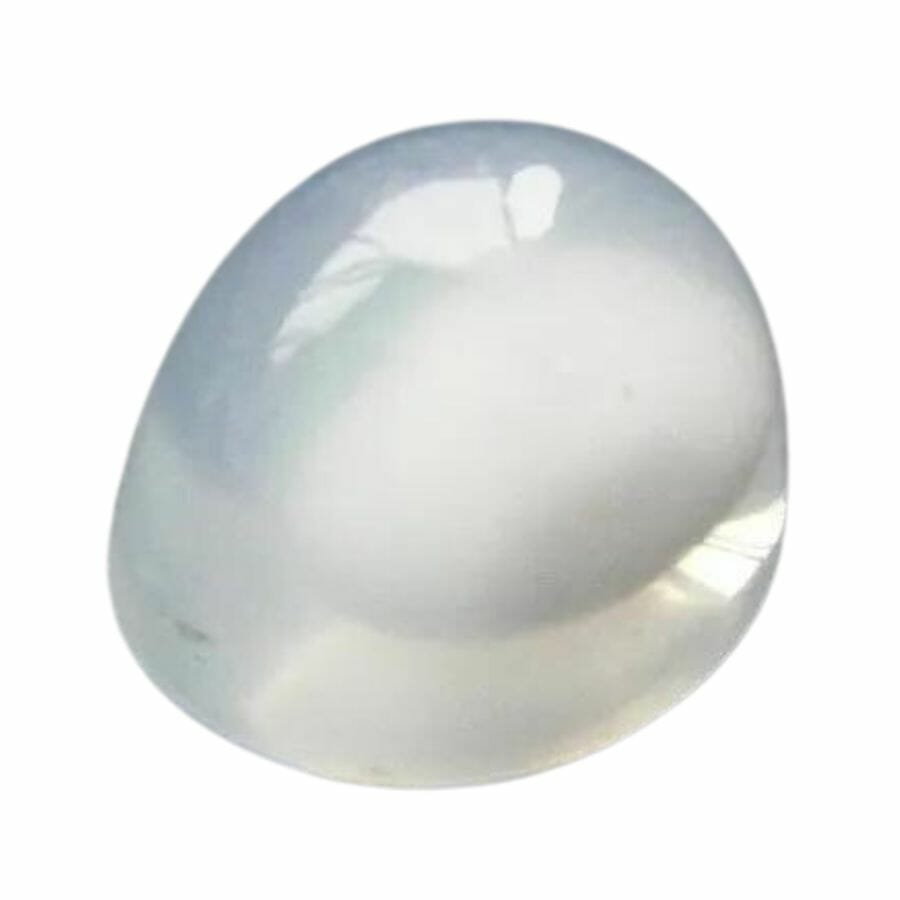
Jelly opals, also known as water opals, have a transparent to semi-transparent look, and they often glow with a soft, dreamy color. Unlike opals that flash many colors, jelly opals have a calm, watery appearance.
Many opals come from Australia, but jelly opals also love to hang out in places like Mexico and the United States. Their clear beauty and gentle glow make them a favorite for many rock fans.
So, if you see an opal that looks like a drop of colored water, you’re likely looking at a jelly opal!
Peruvian Opal
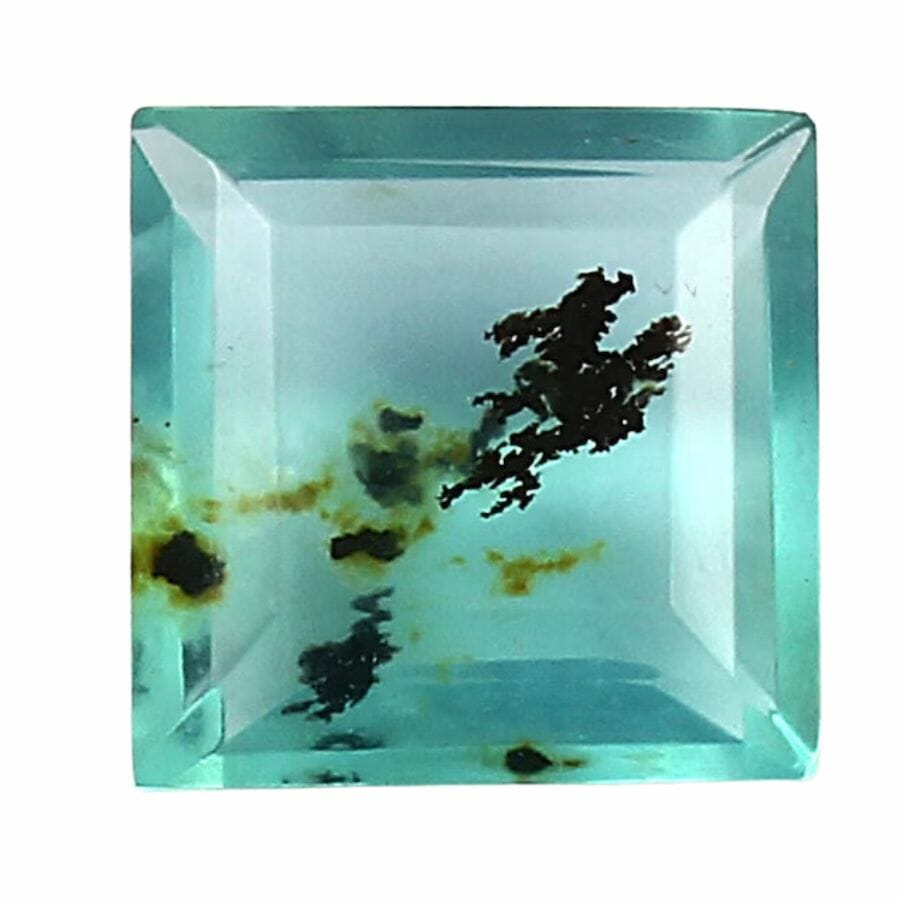
Peruvian opal stands out with its lovely pastel shades! These gems often show off soft blues, pinks, and sometimes greens.
What’s neat about them is that they don’t have the flashy color play most opals are known for. Instead, they charm with their gentle hues.
Now, the name gives away a big hint. While many opals hail from Australia, Peruvian opal is proud to call Peru its home.
Opalized Wood
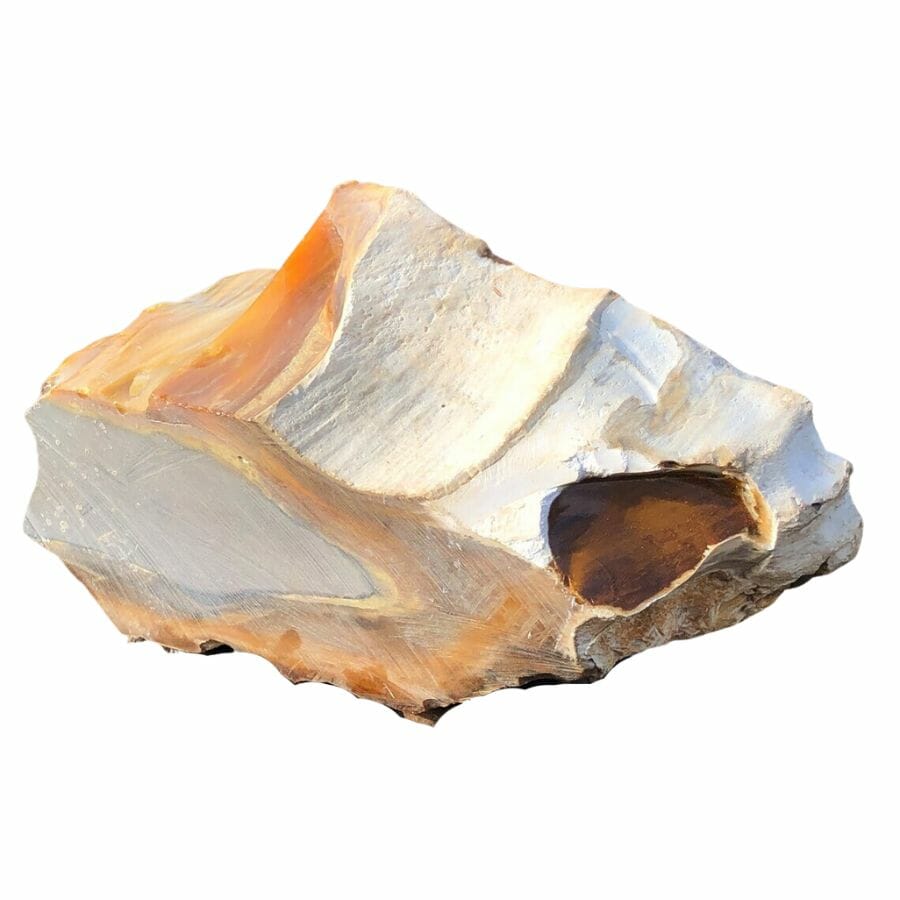
Over time, some trees turn to stone, and in rare cases, they get filled with opal. You can find opalized wood in many spots, including the United States.
However, here’s the twist: often, the wood gets replaced by common opal, which doesn’t show that flashy play-of-color we associate with precious opals.
But even without the color show, these stones are super special. You can still see the tree rings, clear as day.
Common Opal
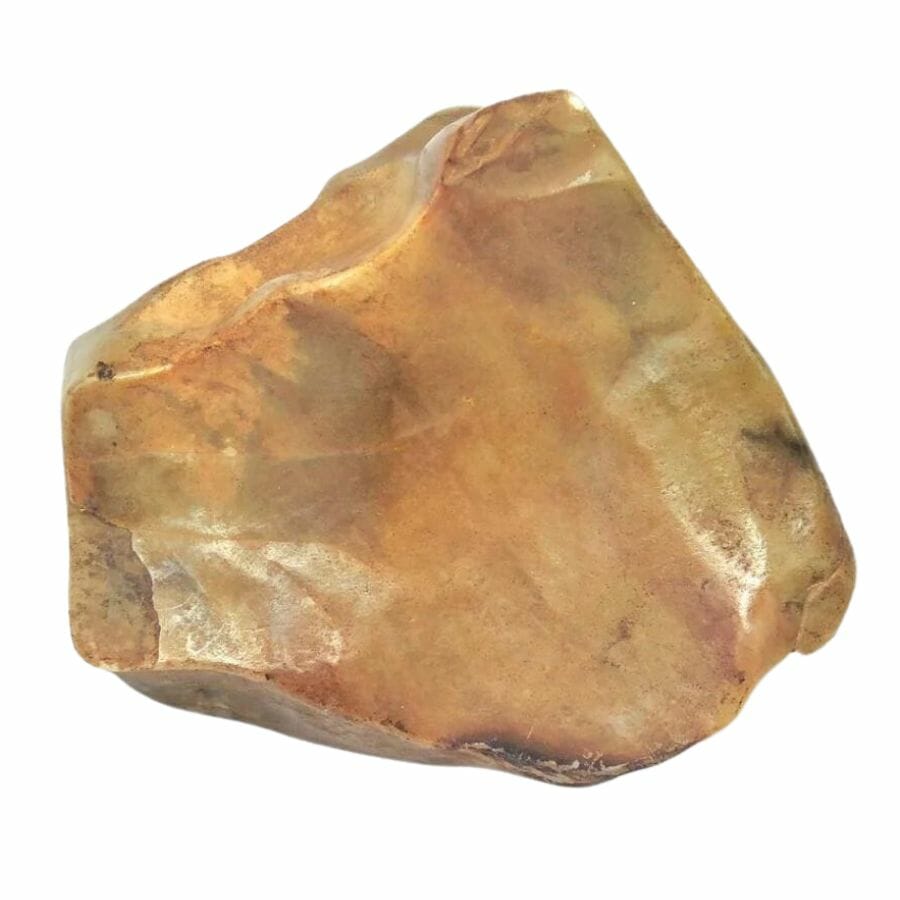
Unlike the flashy precious opals, common opals have a smooth, milky look and don’t show off a play of color. But they still have their own charm with their range of colors, from pinks to blues to greens.
You might be surprised to know that these opals are found in many parts of the world, including the United States, Australia, and even Africa. So, they’re a bit of a traveler!
If you want REAL results finding incredible rocks and minerals you need one of these 👇👇👇
Finding the coolest rocks in isn’t luck, it's knowing what to look for. Thousands of your fellow rock hunters are already carrying Rock Chasing field guides. Maybe it's time you joined the community.
Lightweight, mud-proof, and packed with clear photos, it’s become the go-to tool for anyone interested discovering what’s hidden under our red dirt and what they've already found.
Join them, and make your next rockhounding trip actually pay off.
What makes it different:
- 📍 Find and identify 140 incredible crystals, rocks, gemstones, minerals, and geodes across the USA
- 🚙 Field-tested across America's rivers, ranchlands, mountains, and roadcuts
- 📘 Heavy duty laminated pages resist dust, sweat, and water
- 🧠 Zero fluff — just clear visuals and straight-to-the-point info
- ⭐ Rated 4.8★ by real collectors who actually use it in the field
Where to find opal
The United States has its own hidden pockets teeming with opals. From deserts to mountain ranges, our nation offers diverse landscapes where these beautiful stones are waiting to be uncovered.
Virgin Valley, Nevada
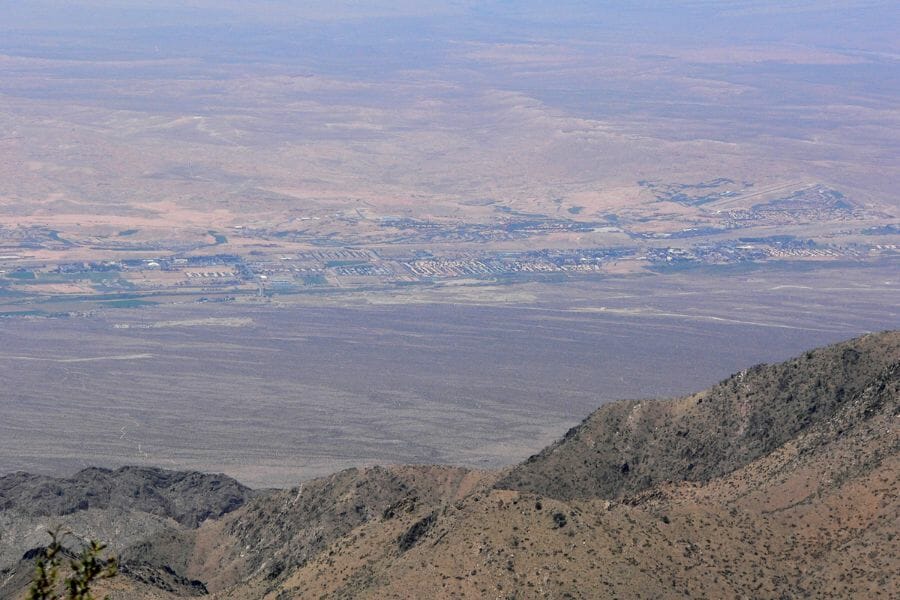
Virgin Valley is like a sparkling jewel box tucked away in the desert. This area is famous for its rich deposits of stunning opals. If you’re into opal hunting, this is a must-visit spot in the U.S.!
The ground here hides beautiful black opals, fiery red opals, and even crystal-clear opals that shimmer in the sunlight. The real thrill is that there are different mines scattered across Virgin Valley where you can dig for these colorful treasures.
Opal Butte, Oregon
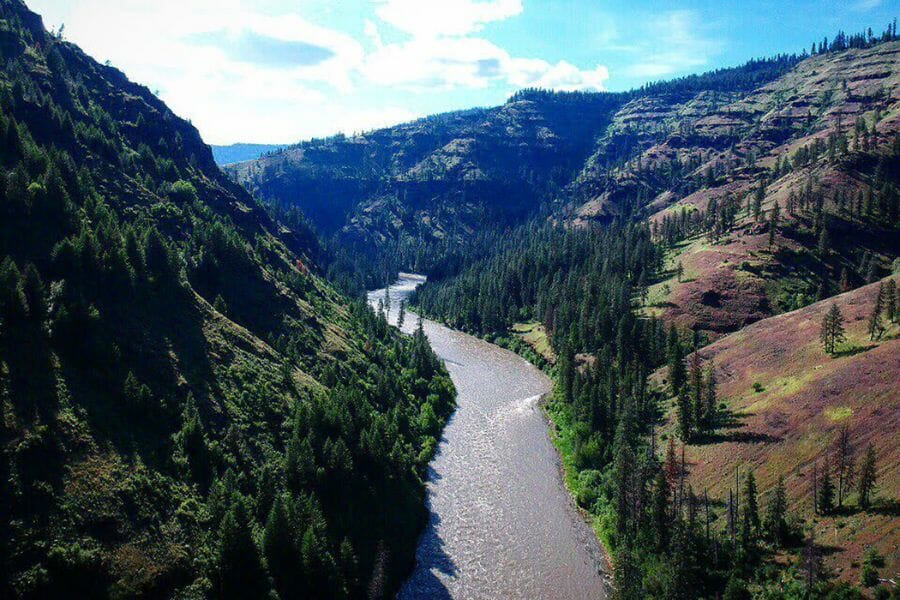
Opal Butte is famous for its breathtaking scenery, it’s also a hotspot for finding beautiful opals. If you’re into opal identification, you’d be thrilled to know the range of opals found here.
From vibrant blue opals to ones with a pink or gold hue, the variety is simply amazing. This place offers a special kind of excitement, as each find can be different from the last.
Opal Butte’s rich soil and unique geology give it the perfect conditions to house these colorful treasures. if you’re looking for a fun and rewarding adventure, Opal Butte should be on your list.
Spencer, Idaho
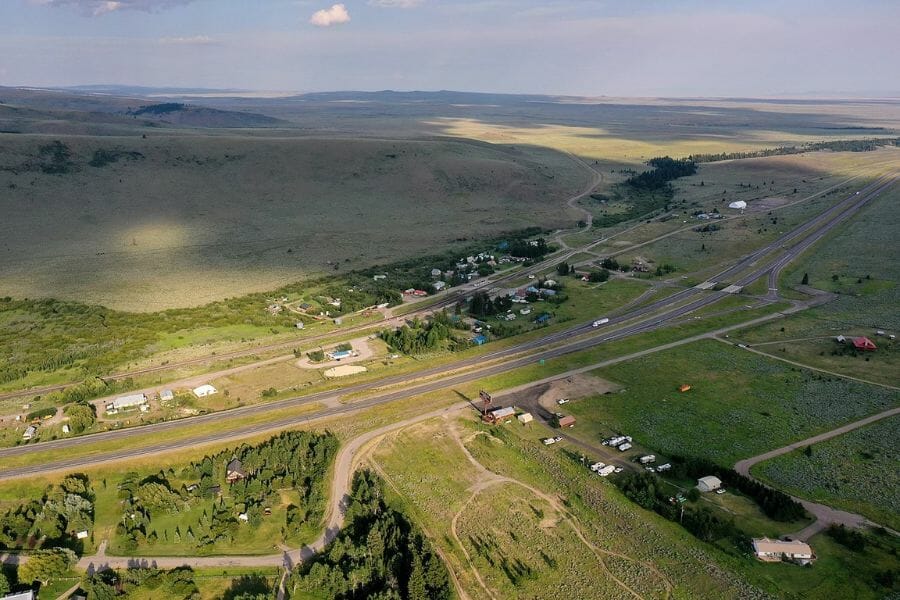
Spencer might seem like a small, quiet town, but beneath the surface, it’s brimming with colorful secrets. It’s where you can find opals, and not just any opals – some of the most dazzling ones around!
Spencer boasts an array of opals from fiery reds to cool blues. Its unique geology makes it a hotspot for these gemstones, earning it the title of the “Opal Capital of America.”
If you’re ever in the area, it’s worth taking a peek into the mines and maybe even trying your hand at digging.
Opal Canyon, California
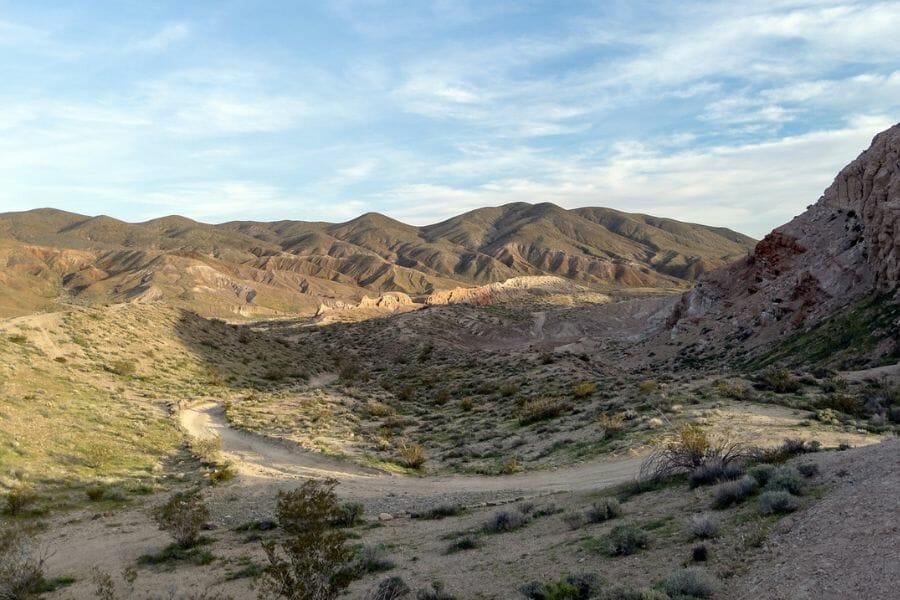
Among the top opal locations in the US, Opal Canyon in the Mojave Desert is a favorite for many because of its rich deposits. Here, you can find two main types of opal: the fiery red fire opal and the shimmering common opal.
These beautiful gems have been attracting folks for years. The desert landscape not only offers the thrill of hunting for these precious stones but also serves as a stunning backdrop for your adventure.
Juniper Mountain, Oregon
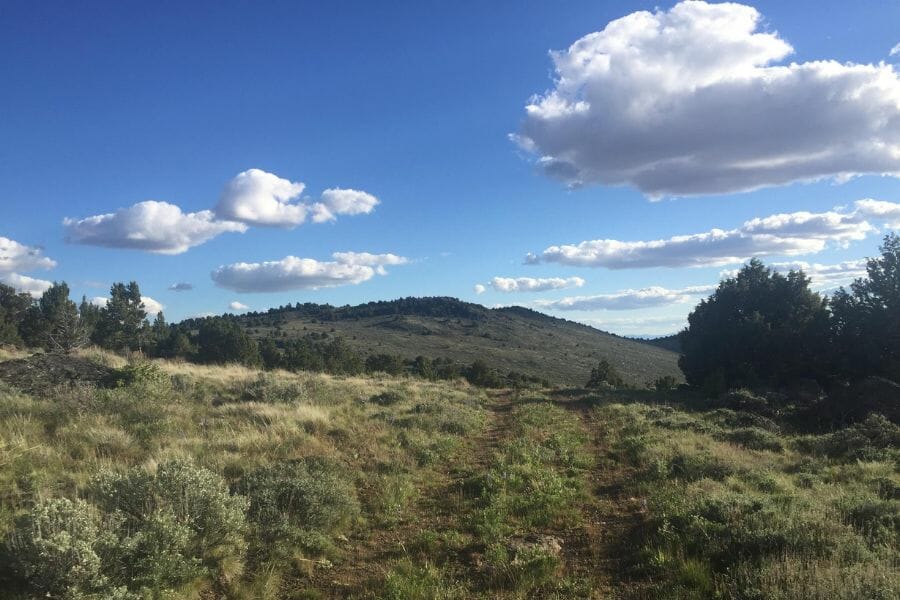
Juniper Mountain offers breathtaking views and an opal-rich land. If you’ve wondered where to find opals in real life, this is definitely a place to mark on your map.
Opal seekers often find varieties with unique green or blue hues, setting them apart from opals found in other locations. These vibrant colors make them sought after by collectors and hobbyists alike.
Juniper Mountain’s terrain is also quite friendly for beginners, so even if you’re new to opal hunting, you’ll feel right at home.
How to find opal
There are a few methods to discover opals, each with its own adventure. Let’s dive into the different ways to uncover these dazzling jewels!
Dig in mine tailings
Finding opals by digging in mine tailings is like searching for diamonds in the rough.
When miners extract opals from the earth, they leave behind heaps of rock and dirt known as tailings. Sometimes, they might miss small opals or pieces that can still be valuable. All you need is a good shovel, a bucket, and some patience.
Start by choosing a spot in the tailings pile. Dig into the material, placing what you excavate into your bucket. Once you’ve gathered a good amount, sift through it carefully.
With a keen eye and a bit of luck, you might spot the colorful shimmer of an opal!
Bring the right tools
Knowing how to find an opal starts with having the right tools. First, a sturdy shovel is essential for digging into the earth or moving aside rocks. A pickaxe can also be helpful for breaking harder ground.
Bring along a bucket to hold any rocks or soil you want to sift through later. Wearing a pair of gloves can protect your hands from sharp rocks and dirt.
If you plan to search in areas with smaller stones or sand, a sieve or screen is perfect for separating potential opals from the surrounding material.
Lastly, always have a water bottle on hand. Wetting the rocks can make the opal’s unique colors shine brighter, making them easier to spot!
Listen for a sound like you’ve hit a chunk of glass
When you’re out searching for opal, using your ears can be just as important as your eyes. Opals have a unique hardness that’s different from the dirt and rocks around them.
As you dig or chip away at the ground, listen closely. If you hear a sound like striking a chunk of glass, there’s a good chance you’ve found an opal! It’s a sharp, clear sound that stands out.
This sound clue can be super helpful, especially in areas where the soil is dense or has lots of other stones. Once you hear that distinctive sound, dig carefully around that spot.
Look for hints of a shimmer
Finding opal can feel like a treasure hunt, and one of the coolest hints is a shimmer in the dirt or rock. Opals have this awesome ability to catch and play with light, giving off a sparkling display.
If you’re in a spot known for opals, keep your eyes peeled for any twinkling or gleaming, especially when the sunlight hits the ground. This shimmer is often the play of color that opals are famous for.
When you spot that hint of shimmer, start digging around gently. It might be just the tip of a bigger opal hiding beneath.
But remember, always handle with care! Opals can be delicate.
How to identify opal once you find it
Finding a gemstone is just half the fun. The real excitement begins when you try to figure out what you’ve got in your hand. Opal has some unique characteristics that set it apart from other stones.
Here are some of the telltale signs that can help you confirm you’ve found a genuine opal.
What opal looks like on the outside
Opal is truly a gem that captures the eye with its beauty. Before it’s polished and set into jewelry, its outside appearance can be quite surprising. These are some of the unique outer characteristics of this stunning stone.
Amorphous shape
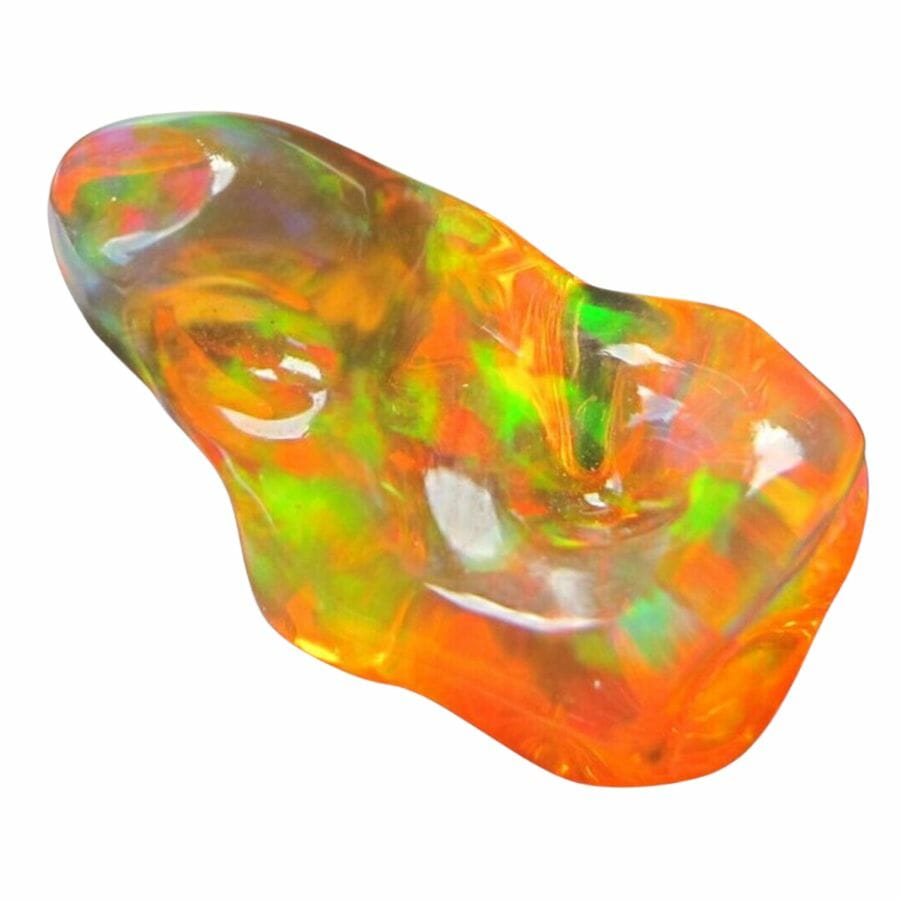
Opals are fascinating because they don’t have a regular crystal shape like many other gems. Instead, they have an amorphous shape, which means they don’t have a definite form or clear boundaries.
When you pick up a piece of raw opal, it might remind you of a blob or a piece of melted wax that hardened suddenly. Some might think it looks like an ordinary rock or pebble.
But don’t be fooled by its humble appearance! While its outside may be unassuming, it’s what potentially lies beneath that surface that has made opals beloved for so long.
Rough surface
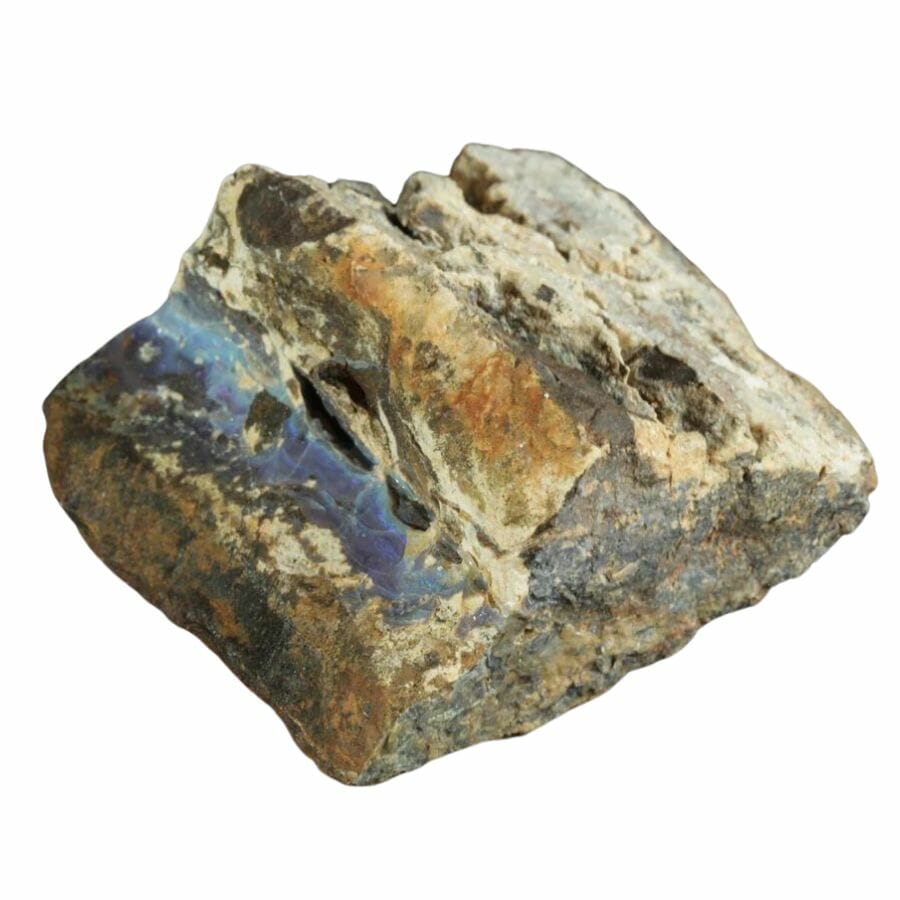
Understanding what an opal looks like on the outside is a big help. It’s not like those polished gems you see in jewelry stores. Its surface isn’t smooth or glossy; instead, it’s rough, kind of like the way a hiking trail feels under your shoes.
If you ever get the chance to touch a raw opal, you’ll notice it might even feel a tad gritty, making it stand out from other shiny or slippery rocks you might find. So, keep an eye out for that unique touch!
Fluorescence
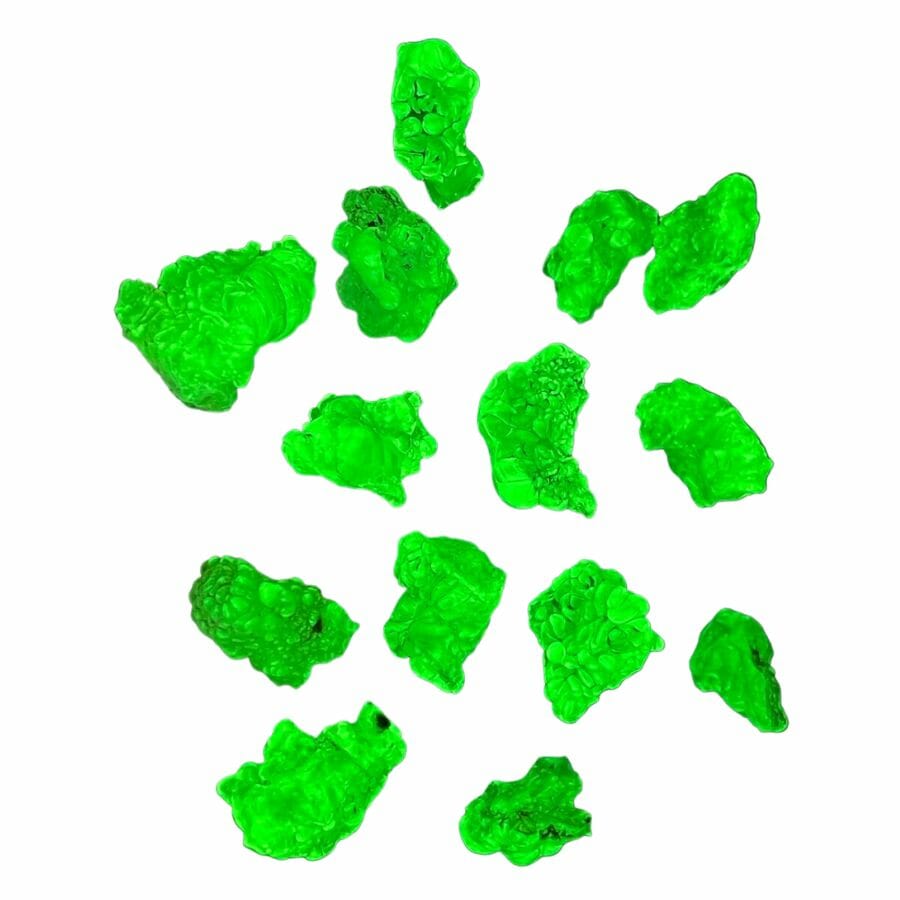
One cool way how to identify opals is by their ability to glow under certain lights. This glowing effect is called fluorescence. When you shine ultraviolet (UV) light on some opals, they light up in vibrant colors.
This happens because of the special minerals inside the opal that react to the UV light. Not all opals will glow, but those that do offer an extra layer of awesomeness.
If you ever get a chance to check out an opal under UV light, don’t miss it. It’s like seeing a hidden side of this amazing gem.
What opal looks like on the inside
Opals are like hidden treasures, with surprises waiting inside. While their outer surface can be intriguing, it’s what’s inside that truly captivates many rock enthusiasts.
Play of color
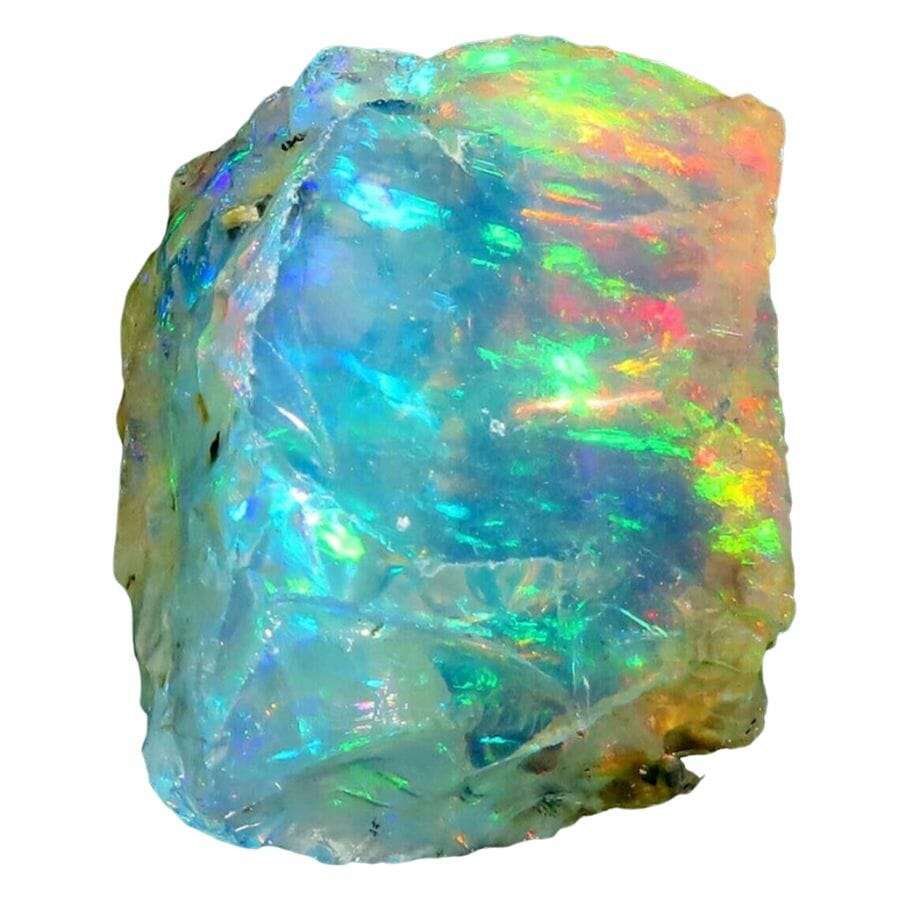
Opals are famous for their stunning play of color, especially when you peek inside. This play of color means that when you move the stone around, it shows off flashes of bright colors like a dance of lights.
You might see hints of blue, green, red, yellow, or even purple. This dazzling effect happens because of tiny silica spheres inside the opal that scatter light. Each opal’s pattern is unique, making every stone special.
ome people compare the play of color to fireworks, rainbows, or shimmering water. So, when you find an opal, be sure to explore its inner light show!
Fracture
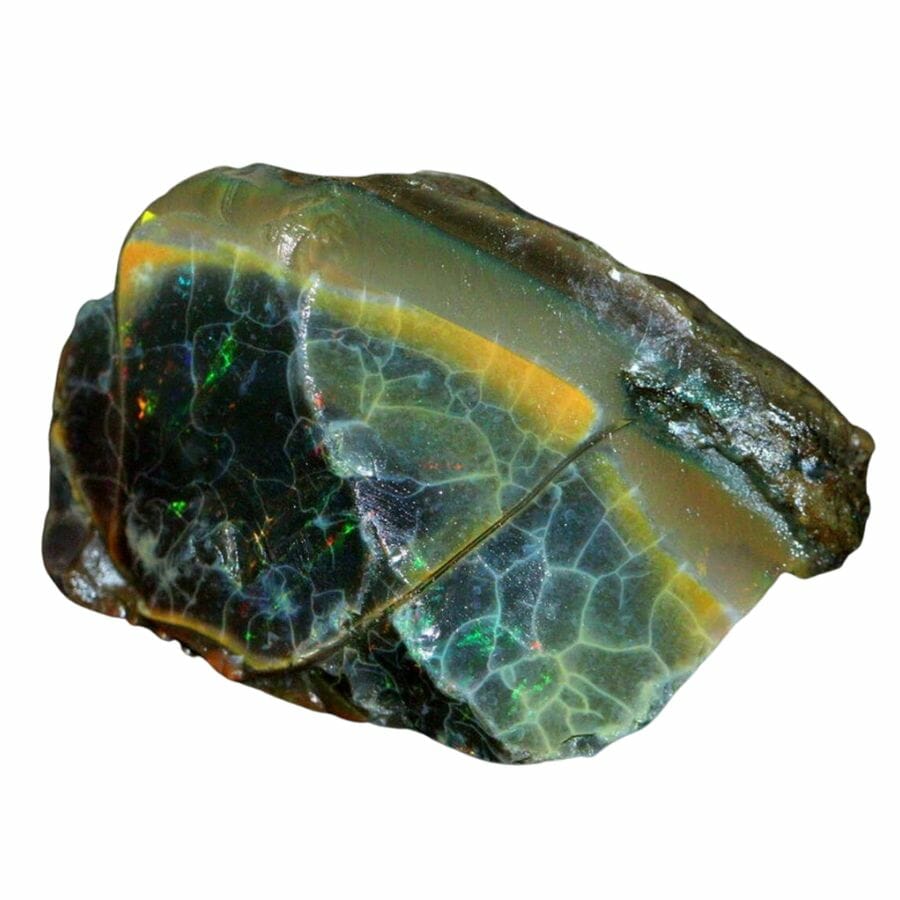
When you break or chip an opal, you’ll notice it doesn’t split in a straight line. Instead, the fracture can be uneven or have a shape like the inside of a seashell. This is what an opal looks like on the inside when it breaks.
It’s called a conchoidal fracture. Think of it like when you scoop out a spoonful of ice cream, and the surface is wavy and curved. That’s similar to how opal breaks.
This feature is one of the many things that sets opals apart from other stones. So, when handling or studying opals, it’s good to be aware of this unique characteristic.
Transparency
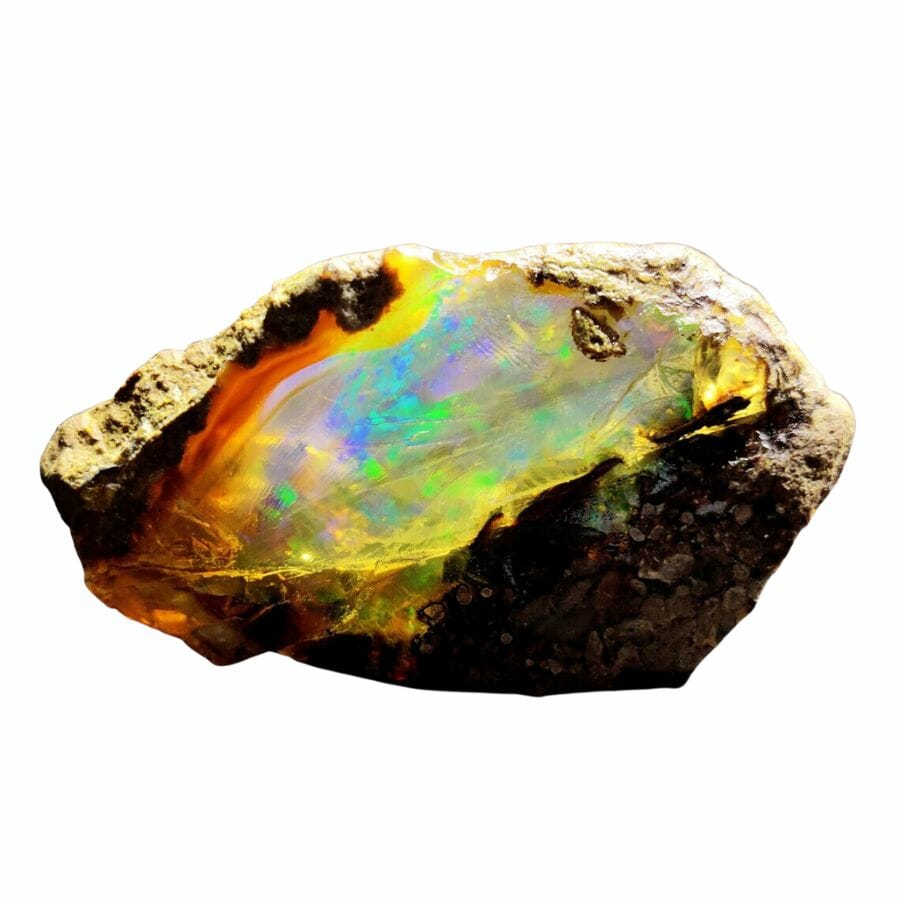
Opals are amazing because they come in different levels of transparency! Some opals are transparent, meaning you can see right through them like clear glass.
Others are translucent, which means they let some light pass through, but not completely.
Then there are opals that are opaque, and you can’t see through them at all, like a brick wall.
When you’re looking at or choosing an opal, pay attention to its transparency. It can tell you a lot about that specific stone and its qualities. Every opal is unique, and its level of transparency is one of the things that makes it special.

